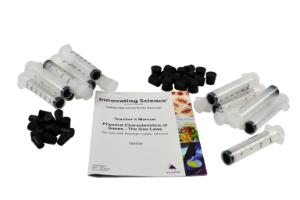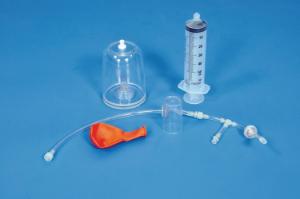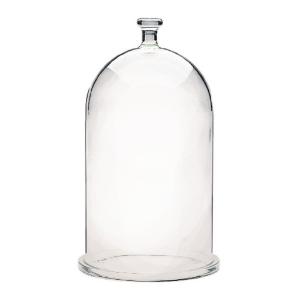It's Easy to Gauge Science Fun with this Free Under Pressure Activity
This activity helps students investigate Boyle's law and the behavior of colloid particles when exposed to pressure changes.
Fill form to unlock content
Error - something went wrong!
Get Your Free Activity
You're in! Thanks for subscribing.
All Grades
In our Crushing Can activity, students observed a spectacular demonstration of atmospheric pressure crushing a can. Now, you can expand on gas law concepts using the Under Pressure activity. Students will be amazed to see how they can inflate shaving cream (or marshmallows) with a bit of help from physics.
Before diving into this low-pressure activity, let's look at some basics.
What are colloids?
A colloid is a substance that has droplets of one state (solid, liquid, gas) surrounded by another state. There are many types of colloids with different combinations of states making up the droplets and the surrounding. Shaving cream and marshmallows are examples of colloids. Shaving cream is air trapped in a liquid colloidal substance of water, sodium hydroxide, and glycerin. Marshmallows are a special (and yummy) type of colloidal dispersion called a solid foam (air trapped in a solid).
Since both substances have gas trapped inside, students can use pressure activities to "puff them up!" The outside pressure around the foam becomes lower than the internal pressure of the air pockets, making them expand. Shaving cream expands dramatically when put in a vacuum; it will be a mind-blowing experience for the young scientists in your class.
How does material state impact volume?
We observe materials in a solid, liquid, or gaseous state in our daily lives. The particles making up the material in solids and liquids are densely packed and don't easily compress. Therefore, solids and liquids have a fixed volume.
In contrast, gases don't have a fixed volume. Instead, gas particles are much further apart than in liquids or solids, so they can be squeezed closer together, compressed or expanded.
Your lesson plan on gases can demonstrate concepts of
- Boyle's law - a relation concerning the compression and expansion of a gas at a constant temperature,
- Gay-Lussac's law - the pressure of a given mass of gas varies directly with the absolute temperature of the gas when the volume is kept constant, and
- Charles' law - the volume occupied by a fixed amount of gas is directly proportional to its absolute temperature if the pressure remains constant.
Download the Under Pressure activity above and take it head-on (a doll's head, that is), so students can get a hands-on demonstration of these gas laws!
References: 1. Scientific American: Puffing up Marshmallows.
Recommended products:
[StartProductBlock]

Physical Characteristics of Gases Lab Activity
Students discover the relationship between gas volume, temperature, moles, and pressure (Boyle's, Charles', and Gay-Lussc's gas laws).
[EndProductBlock]
[StartProductBlock]

Bell Jar and Vacuum Activity Set
Features the fundamentals of vacuum and air pressure and demonstrates how a pump works and how to find the mass and density of an air sample.
[EndProductBlock]
[StartProductBlock]

Bell Jars
Various bell jars and accessories.
[EndProductBlock]
[StartProductBlock]
Kinetic Theory Model
Study the motion and behavior of gas molecules with this intriguing demonstration.
[EndProductBlock]
